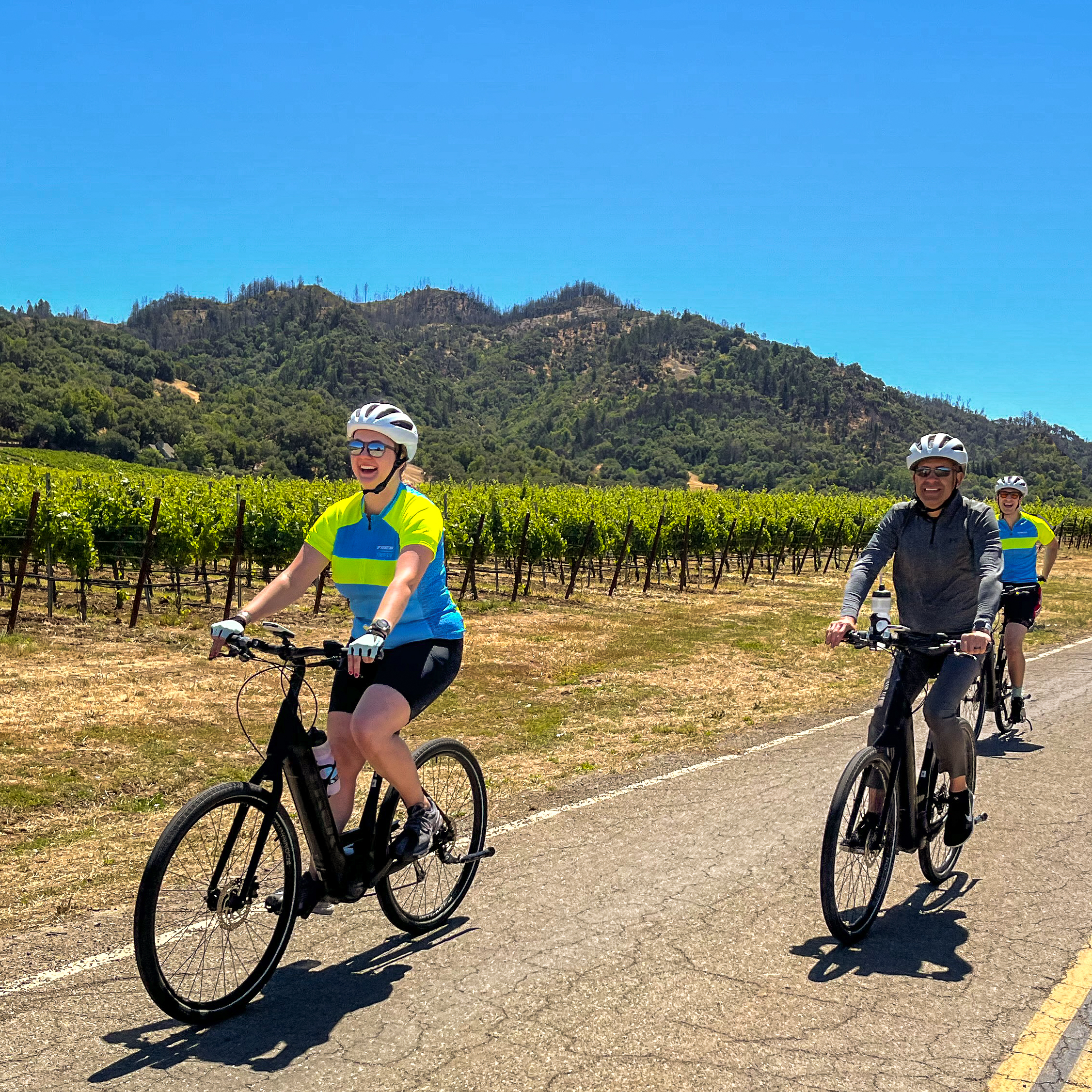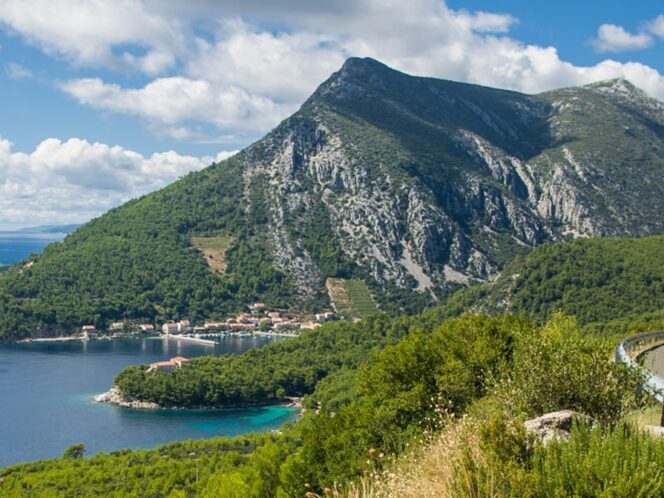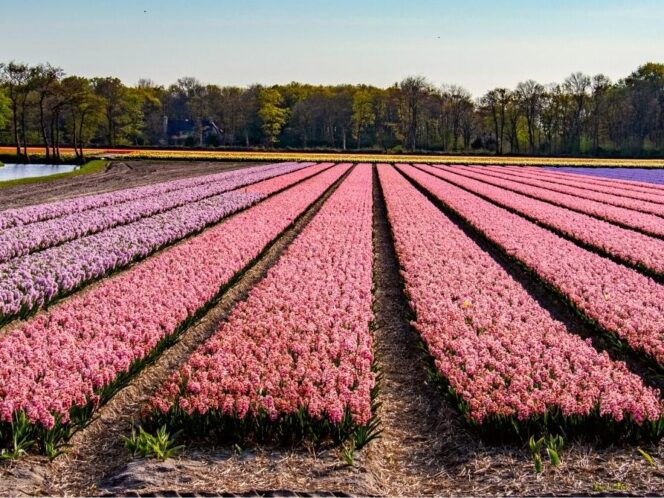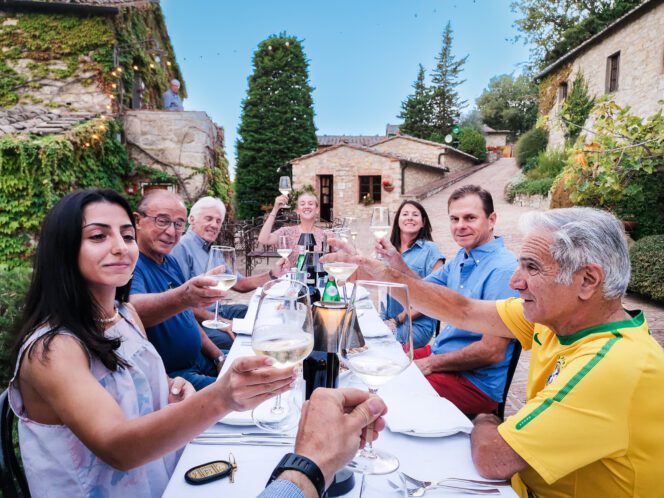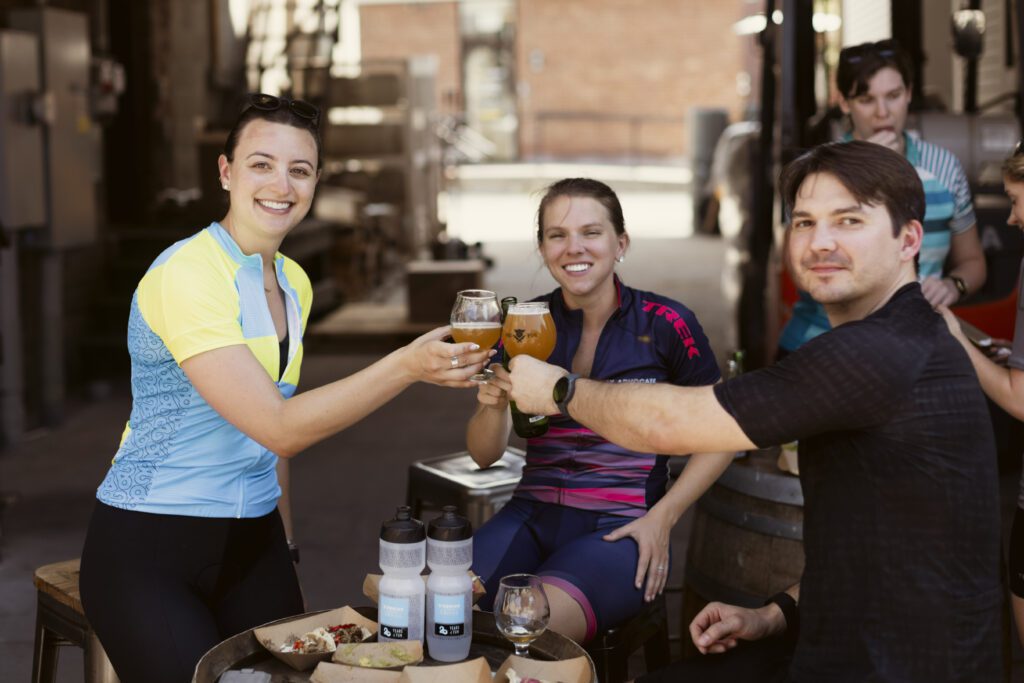
It’s early Saturday morning, you’re exhausted from an epic work week, and you’re expecting company the following morning. Not just any random acquaintances though–these are people whom you’ve never met and really want to impress. They don’t know each other and they don’t know you. Except, they’ve all heard that when it comes to your shindigs, they can expect the best of the best. They are very different people with different ideas of what “the best” means, but they are all anticipating an unforgettable visit with you. And there’s 20 of them. Oh, and they’re staying for a week.
This is a routine Saturday in the life of a Trek Travel guide.
So on Saturdays we get stuff done. There are copies to be made, routes to be edited, groceries to be bought, vans to be washed, bikes to be prepped, hotel reservations to confirm, dinner menus to amend, social hours to organize, picnics to be created, welcome bags to be stuffed, logistics to be discussed, dishes to wash, laundry to get done, suitcases to pack. And you should probably remember to eat (but sleep is for the weak, so don’t worry about that).

With that mountain of work in front of you, who would you want beside you?
For guides, often times it’s somebody we met three hours earlier at the airport. Perhaps in that moment we have no idea how they perform under pressure; we don’t know their strengths and weaknesses in the field; we’re unsure whether they need four cups of coffee or eight before it’s okay to talk to them in the morning. But we do know one thing: it’s always going to be the best person for the job, because that’s what it means to be a Trek Travel guide. Amid the incredibly wide range of backgrounds and experience, there are consistent characteristics within each of us that boils down to a few basic personality traits that make up a guide. So no matter where in the globe you may roam or what style of trip you may be assigned, you know that the person working next to you is going to share certain intrinsic characteristics with you. They’re your colleague, your adventure buddy, your biggest critic, your confidant, your partner in crime, your roommate, your friend, your enemy, and your greatest resource. They’re your co-guide. And there will never be any relationship like the one you share.
I just returned from 2016 Return Guide Training in California and I am overflowing with admiration for the human beings that I get to share my job with. We don’t have an office, we have a van. We don’t clock in at nine and clock out at five, we are on as long as our eyes are open. We don’t get to go home to our families at night, we go back to the guide house and crack a beer if we’re lucky. It is incredibly difficult to describe our job to people, and it is even more difficult to explain the co-guide relationship. Over the last year I have grown more as a human being just by associating with these incredible people than any other experience to date in my adult life. And if I can give you even a small glimpse into that world, I want to try. I’d like to share some of the lessons I’ve learned in one year of guiding and building relationships and gleaning life advice from some of the best in the business. Being a Trek Travel guide has made me a better human being. And although it would be impossible to outline everything I’ve learned this year, here are ten things I learned from my co-guides that have made me a better person:


1. Trust
Being a Trek Travel guide is like doing a giant trust fall. You are thrown into a situation where your livelihood depends on your ability to work cohesively with another person who you may have never met before. You have to trust that your co-guide is there with the same intentions and the same end goal as you, and that they’re doing their part to get the job done. You have to trust their judgment and trust their decision-making process. You learn quickly that there are a hundred different ways to get the job done, and you learn to trust that your co-guide knows what they’re doing.
2. Humility
This is a big one. My first year, I felt like I had to prove myself in the field. Sometimes I got a little cocky and unreceptive to coaching. Criticism hit hard. But I was constantly learning. Constantly realizing that everyone around me has so much to offer and so many lessons to teach. At some point I learned to put my ego aside and ask that stupid question or take a suggestion on a better way to get something done. Being a guide is a constantly humbling experience, and humility itself is a great teacher.
3. Be Honest
Your co-guide is going to know who didn’t pump that tire up to pressure. They’re going to know who messed up the lunch order. They’re going to know who left the toilet paper empty at the guide house. You can’t scapegoat your way out of things in this line of work. If you made a mistake, the best way to fix it is to admit your wrongdoing. Now you’ve got two brains figuring out how to make it right.
4. Give Credit
One of the best guiding tips I learned this year was in Mallorca with Kyle. Kyle taught me that there’s no room for “I” in guiding. If you do something awesome for a guest, you never say, “Look what I did!” Instead you say, “Look what we did.” We prepped your bike. We made that delicious chicken salad. We can’t find your luggage. Not only does this present a unified front as a guide team, but it means sharing in the responsibility when things go wrong and sharing the credit when things go right.


5. Work It Out
Another piece of Kyle wisdom was about co-guide communication. When you spend 13 hours a day working with someone and then go home to also live with that person (for weeks a time), you don’t want to have unresolved issues between the two of you. From the get-go, Kyle told me, “If I’m doing something you don’t agree with, tell me immediately. I am going to do the same.” In the middle of a hectic day, when tensions are high and there’s no room for mistakes, don’t let things fester. Talk about it now.
6. Quick Forgiveness
This is something I learned in Vermont from my co-guide Laura Lee. One day I messed something up and I felt horrible about it. Laura Lee said to me, “Remember, we are all just doing our best out here.” She could have been really mad at me, but instead she was compassionate and forgiving. When co-guides mess up, you have to learn from the mistake and forgive quickly. Because we never mean to mess up. We are all just doing our best.
7. Patience
As a guide you learn very quickly that everybody is different: guests are all different people, subcontractors are all different people, and co-guides are all different people. With that comes differences in opinions, expectations, and thought processes. Learning to be patient with your fellow humans goes a long way out here.
8. Joy
In the past four days I have experienced more spontaneous dance parties, more bear hugs, and more belly laughs than I can remember in such a short period of time. During trips, there may be times when you can’t stand your co-guide. But one year later at Guide Training, you’re sprinting to hug them and snorting beer out of your nose from laughing. These people are your family. You fight like family sometimes, but you also learn to love them like family. You share life and you share joy, and it is invaluable.


9. Be Present
The fact is heavy on my heart that I may not see these individuals for another year. Once we’re out in the field, moving between trips and countries, it’s co-guide roulette. So while we are all here together, every moment matters. Out on a trip, looking across the Pacific Ocean at sunset or riding up Formentor on a Friday afternoon, every moment is beautiful. You learn to be there.
10. Gratitude
There is no part about this job to not be thankful for. We get to travel to beautiful places, eat great food, ride our bikes, and do something we love. The work is hard. But when you and and your co-guides are sitting on the hotel balcony in 7,800,000 thread count bath robes holding craft beers and looking out over the Bay of Nicoya, you just have to toss a little “thanks” into the universe. Even when the work is hard and I am dog tired, learning to look around at where I am makes it impossible to ignore how fortunate I am to call this my job.
I’m sitting here in a rare moment alone and feeling so incredibly grateful that I’m going to keep seeing these faces and hearing these funny laughs along the way. I know that once the season gets rolling and we’re out there living in the thick of it, things are going to get hectic and stressful and I’m going to forget this feeling. I hope I don’t. I hope I never forget Ioanna introducing herself to me by saying, “You look like a person that dogs would like.” I don’t want to forget Tony and Jake’s matching disco costumes while they pose for a photo op. I don’t want to forget listening to Grant teach everybody bike mechanics. And I definitely don’t want to forget how much I’ve grown over the short span of one year.
I can’t wait for round two.


